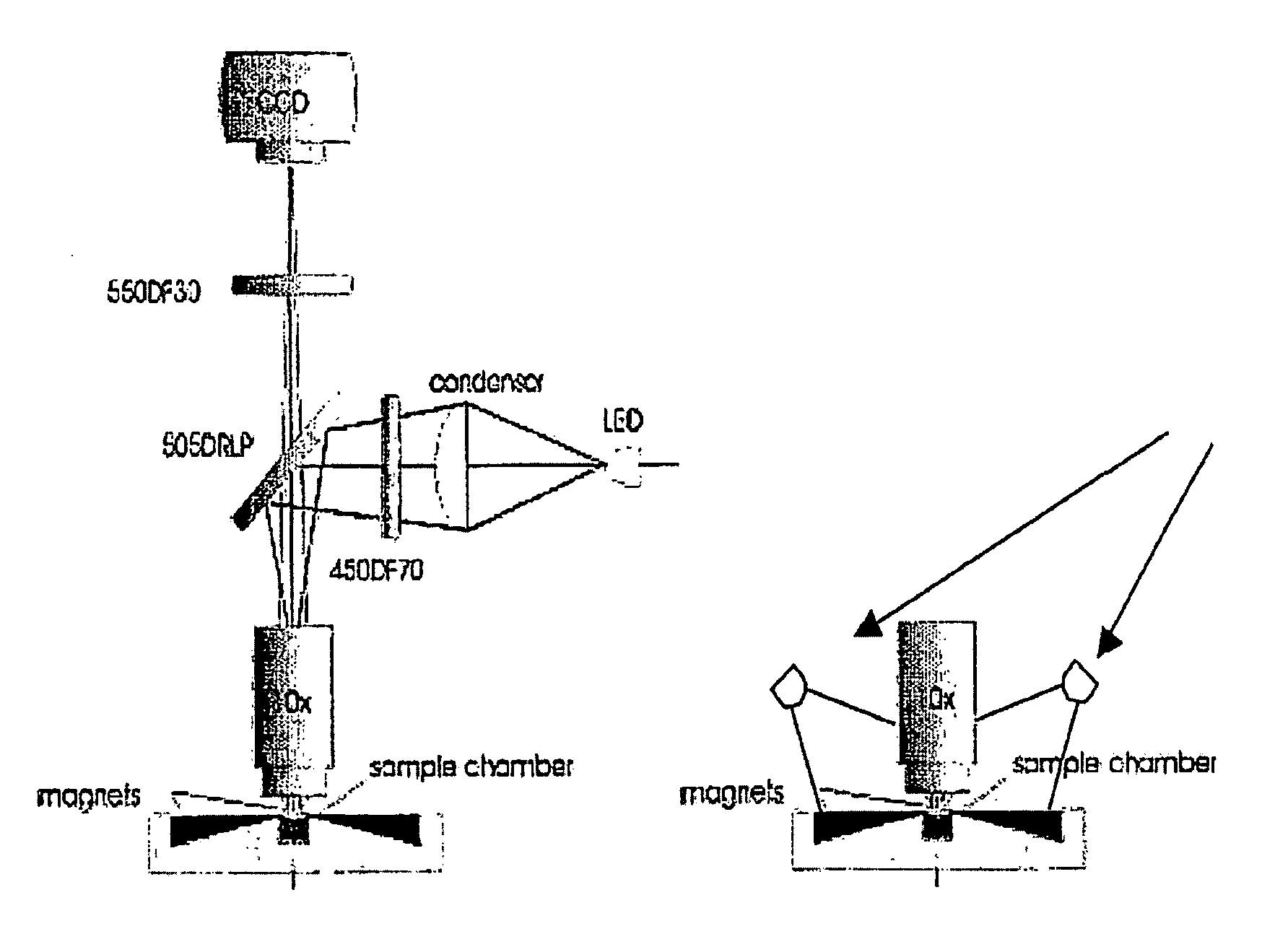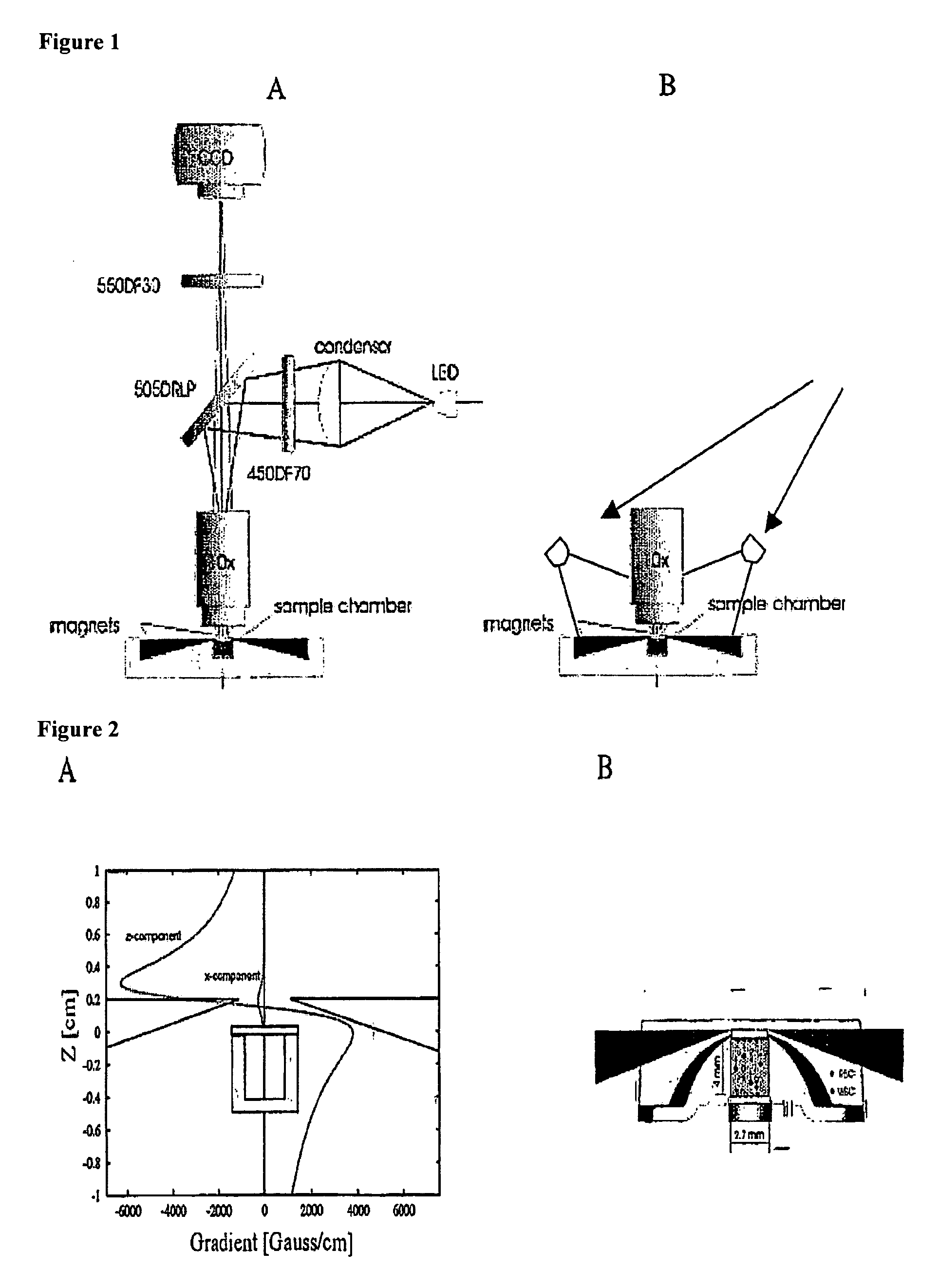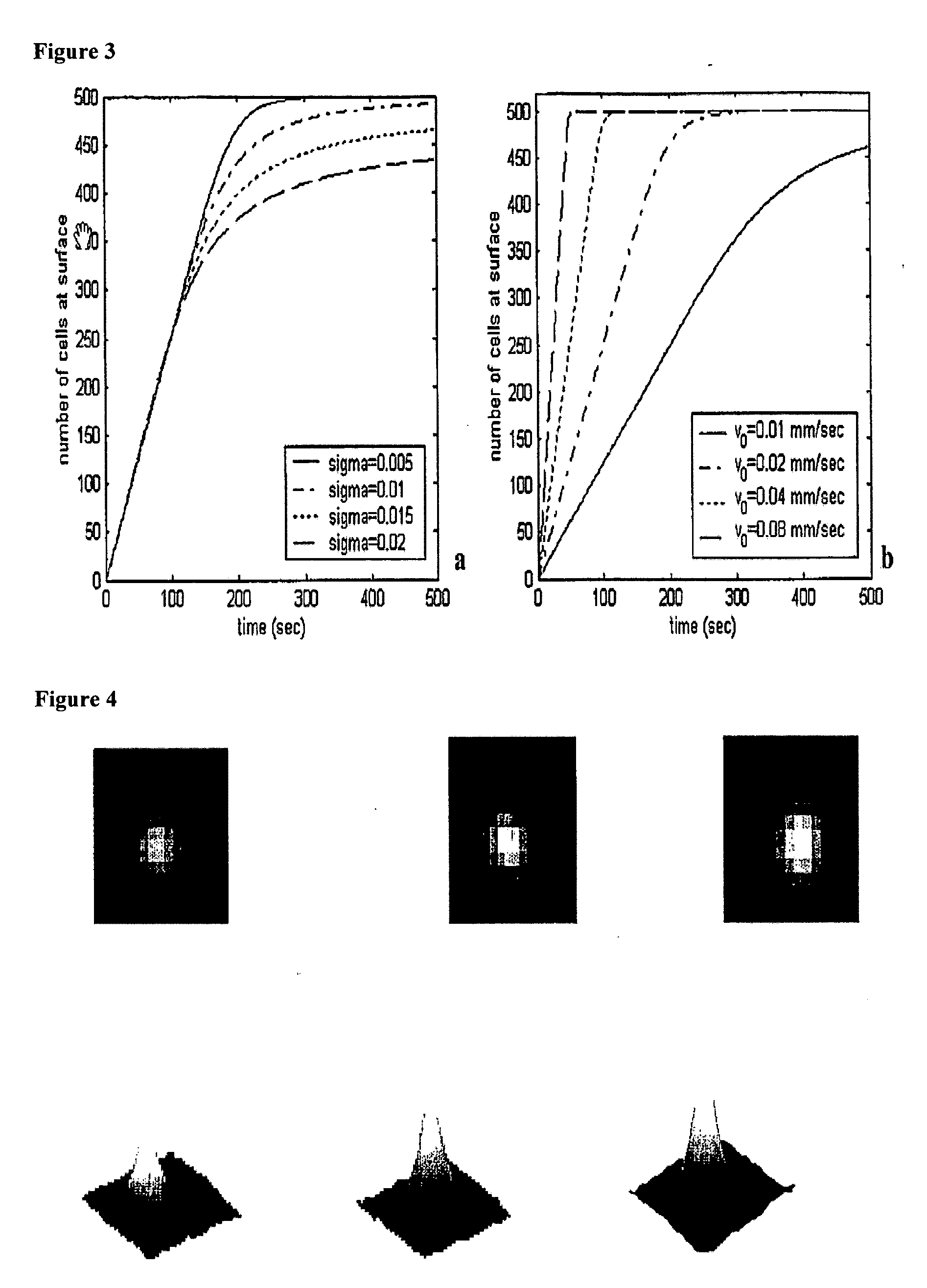Methods and algorithms for cell enumeration in low-cost cytometer
a cell enumeration and low-cost technology, applied in the field of methods and algorithms for cell enumeration in low-cost cytometers, can solve the problems of considerable laborious experimentation and optimization in the development of algorithms for image acquisition and data reduction, and achieve the effect of reducing purchase and operating costs and functional simplicity in design
- Summary
- Abstract
- Description
- Claims
- Application Information
AI Technical Summary
Benefits of technology
Problems solved by technology
Method used
Image
Examples
example 1
System Characterization
[0145] To evaluate the theoretical predictions, the following experiment was done. A photodiode was placed in front of the objective, at the sample plane. A diaphragm restricted the illuminated area on the photodiode to a disk with a diameter of 1.6 mm. The LED and the condenser lens were placed in different configurations, so that an image of the diode chip was created at the back focal plane of the objective, and the size of this image was varied from almost a pin-point source to 25 mm.
[0146] The result of the experiment is presented in FIG. 20 where the curve obtained from the ray-tracing algorithm is shown together with the experimental data. As was predicted by the algorithm, an optimal value was found for the size of the image at the back focal plane of the objective. The shape of the curve resembles the situation predicted by the algorithm, except for large values of BB′, where the experiment shows an efficiency of almost zero. This may be the result ...
example 2
Total White Blood Cell Counting
[0159] Isolated white blood cells were spiked into a leukocyte-depleted red cell concentrate at known leukocyte concentrations, which ranged from 5 to 30,000 cells / μl. The samples were then processed according to the following total leukocyte selection protocol. To 100 μl of EDTA anti-coagulated whole blood in a 12×75 mm glass tube, 20 μl 100μ / ml biotinylated CD45 monoclonal antibodies were added. After 30 minutes of incubation at room temperature, 10 μl of 0.4 mg / ml streptavidin-ferrofluid was added. Then, the sample was placed in and out of a HGMS magnetic quadrupole (QMS 13, Immunicon® Corp., PA) three times (10 seconds each time). After standing for another 30 minutes, 5 μl of 3 mg / ml acridine orange was added and the sample was diluted to a final volume of 2 ml with Cell Buffer (Immunicon Corp, comprised of mainly phosphate buffered saline or PBS) and a 320111 aliquot of the sample was then inserted into the sample chamber. The chamber was capped...
example 3
CD4+ Cell Counting
[0166] The number of CD4+ lymphocytes in 95% of all normal individuals fall between 355 to 1298 cells / μl. In AIDS patients, a CD4 count of 500 cells / μl is often used to initiate antiretroviral therapy, a count of 200 CD4 μl is used to start prophylactic anti-microbial treatment, a count of 100 CD4 μl is often associated with an increase in opportunistic infections and a count below 50 CD4 / μl has a high occurrence of HIV related death. It is therefore important to accurately determine the number of lymphocytes expressing CD4.
[0167] CD4 counts were measured in whole blood samples from ten donors by Becton Dickinson's TruCount® flow cytometer and the method of the invention outlined below. Whole blood (200 μl) was added to 12 mm×75 mm polystyrene test tubes and mixed with 20 μL 0.1 mg / ml 10× biotinylated-anti-CD4 Mab (2 μg added Mab) and 8.5 μL 0.47 mg / ml Streptavidin ferrofluid (4 μg added iron). The sample was mixed and incubated for 10 minutes in a QMS...
PUM
| Property | Measurement | Unit |
|---|---|---|
| central wavelength | aaaaa | aaaaa |
| average cell velocities | aaaaa | aaaaa |
| area | aaaaa | aaaaa |
Abstract
Description
Claims
Application Information
 Login to View More
Login to View More - R&D
- Intellectual Property
- Life Sciences
- Materials
- Tech Scout
- Unparalleled Data Quality
- Higher Quality Content
- 60% Fewer Hallucinations
Browse by: Latest US Patents, China's latest patents, Technical Efficacy Thesaurus, Application Domain, Technology Topic, Popular Technical Reports.
© 2025 PatSnap. All rights reserved.Legal|Privacy policy|Modern Slavery Act Transparency Statement|Sitemap|About US| Contact US: help@patsnap.com



